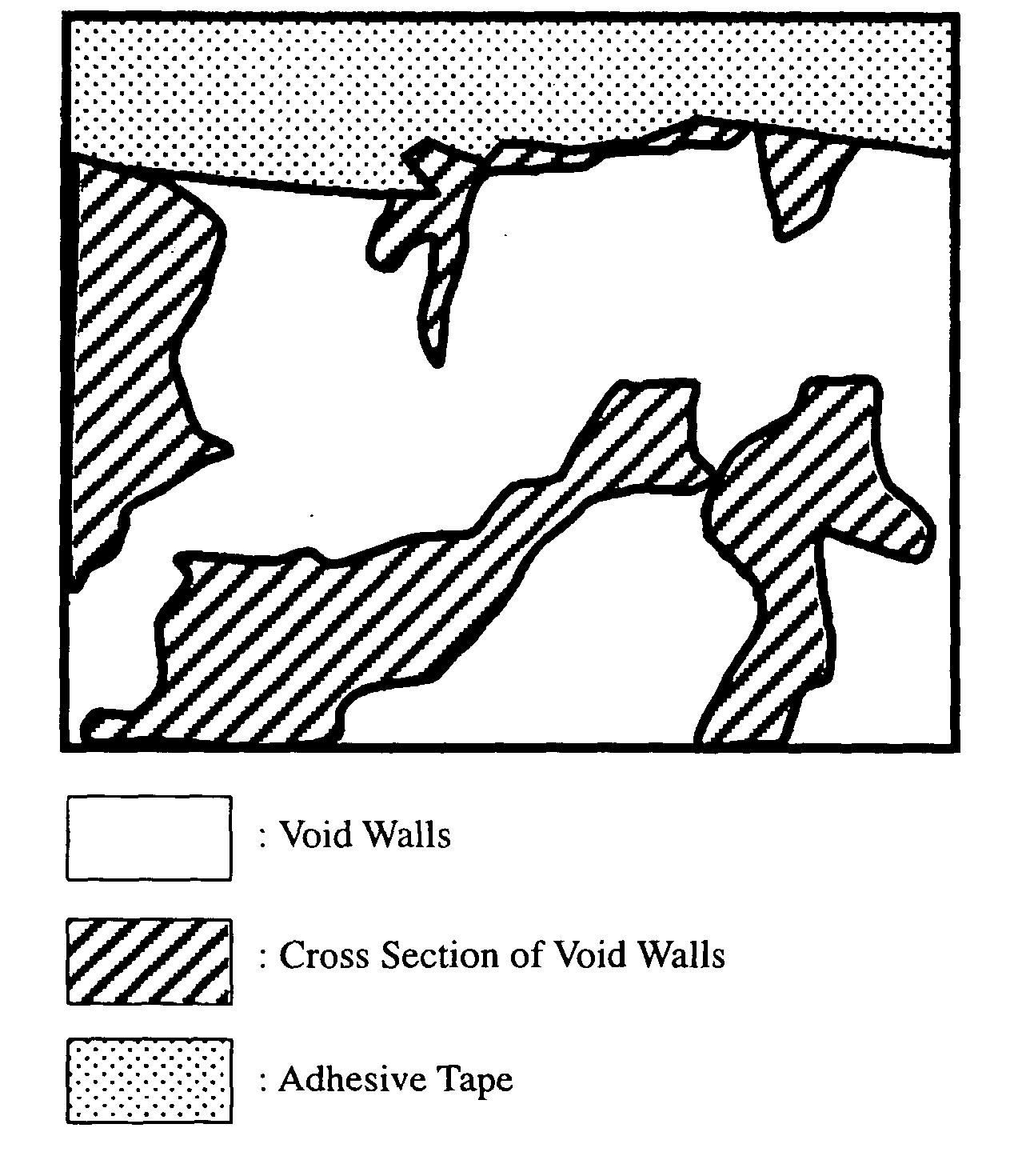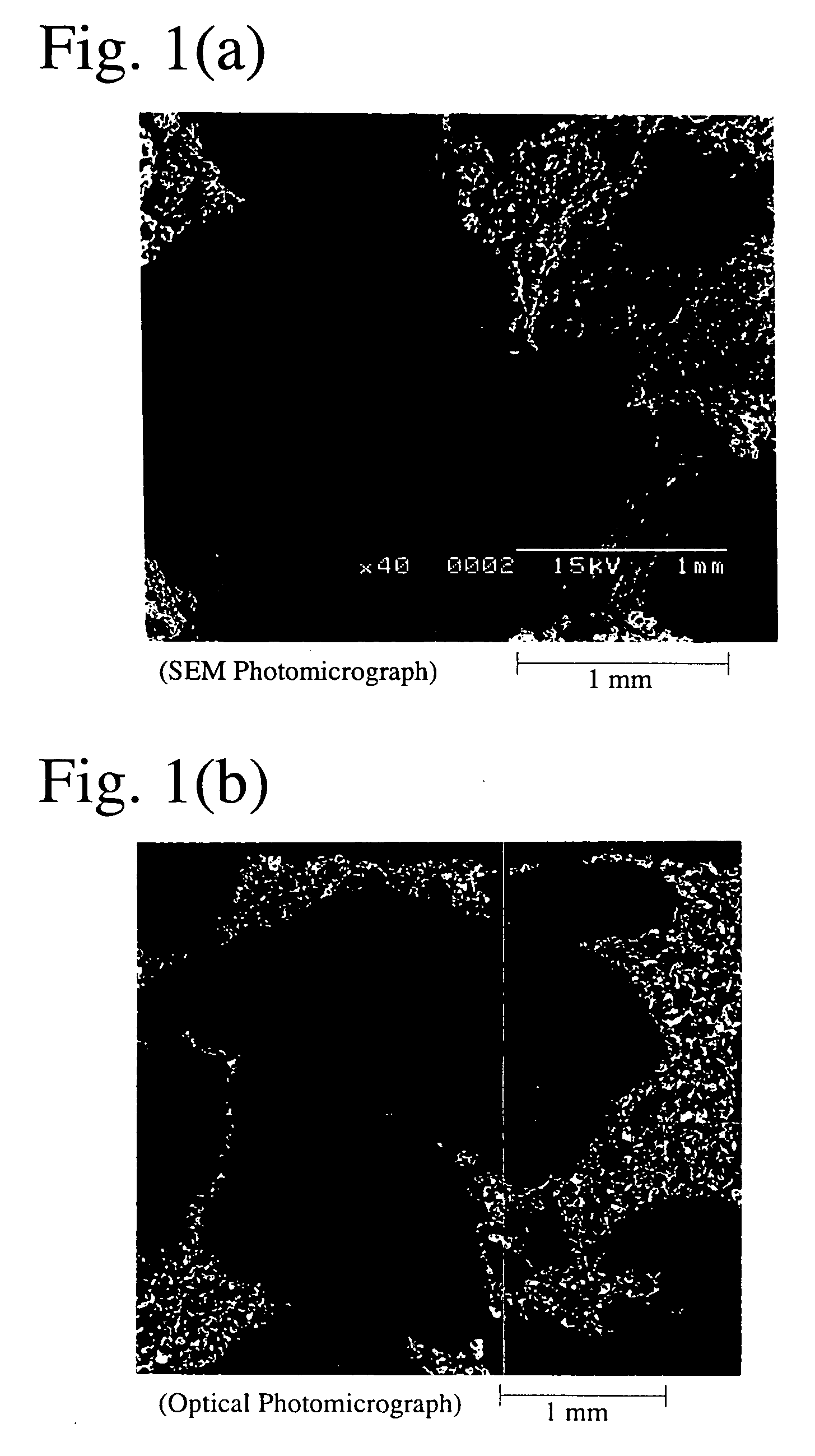Porous sintered metal and filter thereof, and method for producing porous sintered metal
a technology of porous sintered metal and filter, which is applied in the direction of filtration separation, core/yokes, separation processes, etc., can solve the problems of cracking and erosion of ceramic filters, poor function of capturing particulates, and easy breakage of ceramic honeycombs, etc., to achieve a small pressure loss, increase the resistance to vibration or thermal shock, and the effect of rapid increase of pressure loss
- Summary
- Abstract
- Description
- Claims
- Application Information
AI Technical Summary
Benefits of technology
Problems solved by technology
Method used
Image
Examples
example 3
[0078] A blended mixture prepared in the same manner as in Examples 1 and 2 was molded by rolling. The resultant green body was subjected to extraction, drying, heat-debinding and sintering in the same manner as in Examples 1 and 2, to produce a disc-shaped sample having a thickness of 10 mm and a diameter of 144 mm.
example 4
[0107] Water-atomized SUS316L powder having an average particle size of 60 .mu.m, commercially available methylcellulose, and spherical paraffin wax particles having an average particle size of 1,000 .mu.m were mixed. Water and a plasticizing agent were added thereto, and the resultant mixture was blended. The volume percentage of the paraffin wax particles was 80% or 90% based on the total volume (100%) of the SUS316L powder and the paraffin wax particles, to prepare two blended mixtures.
[0108] Each blended mixture was extrusion-molded to a plate-shaped green body, which was cut to a size of 80 mm in diameter and 15 mm in thickness, and dried at 50.degree. C. The green body was soaked in n-paraffin at 70.degree. C. to extract the paraffin wax particles, and then dried at 80.degree. C. The percentage of the paraffin wax particles extracted was approximately 90%. The green body was then heated in Ar at a heating rate of 50.degree. C. / H in a heat-debinding furnace, and kept at 900.deg...
example 5
[0110] Water-atomized SUS316L powder having an average particle size of 10 .mu.m, the same methylcellulose as in Example 4, spherical paraffin wax particles having an average particle size of 1,000 .mu.m, and irregular polypropylene particles having an average particle size of 150 .mu.m were mixed. Water and a plasticizing agent were added thereto, and the resultant mixture was blended. The volume percentage of the paraffin wax particles added was 60%, and the volume percentage of the polypropylene particles added was 12.5%, based on the total volume (100%) of the SUS316L powder, the paraffin wax particles and the polypropylene particles.
[0111] The blended mixture was extrusion-molded to a plate-shaped green body, cut to a size of 80 mm in diameter and 15 mm in thickness, and dried at 50.degree. C. The paraffin wax particles were extracted in the same manner as in Example 4. The extracted green body was heated to 350.degree. C. at a heating rate of 50.degree. C. / H, heated from 350.d...
PUM
| Property | Measurement | Unit |
|---|---|---|
| Fraction | aaaaa | aaaaa |
| Fraction | aaaaa | aaaaa |
| Thickness | aaaaa | aaaaa |
Abstract
Description
Claims
Application Information
 Login to View More
Login to View More - R&D
- Intellectual Property
- Life Sciences
- Materials
- Tech Scout
- Unparalleled Data Quality
- Higher Quality Content
- 60% Fewer Hallucinations
Browse by: Latest US Patents, China's latest patents, Technical Efficacy Thesaurus, Application Domain, Technology Topic, Popular Technical Reports.
© 2025 PatSnap. All rights reserved.Legal|Privacy policy|Modern Slavery Act Transparency Statement|Sitemap|About US| Contact US: help@patsnap.com



